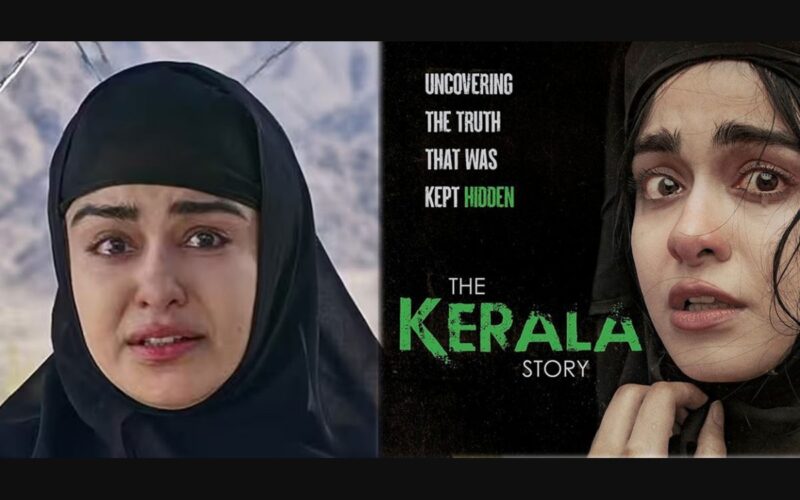In recent years, the Indian film industry, media, and politicians have come under increasing criticism for perpetuating stereotypes and hostility toward the Muslim community.
Table of Contents
A film about this issue, The Kerala Story, has caused controversy and division. But amidst these tensions, Indian vlogger Dhruv Rathee has proven himself an advocate for reason, challenging the narratives spread by the mainstream media in India.
By emphasizing the importance of critical thinking, he invites us to question the information presented.
The Kerala Story
Directed by Sudipto Sen and produced by Vipur Amrtral Shah, The Kerala Story follows three Indian girls who are said to be victims of religious indoctrination by members of Islamic organizations.
The film caused a stir even before its release, demanding it be banned for its portrayal of Muslims. The controversy highlights the larger question of how media narratives shape public perceptions and contribute to community marginalization.
To understand the impact of Tales of Kerala on public opinion, it is important to examine the propaganda techniques it used. It draws highlights toward Hitler’s two key techniques, the use of “big lies” and half-truths. These tactics manipulate information to create a distorted reality in which repetitions and partial truths deceive and influence public opinion.
Indian video blogger Dhruv Rathee carefully analyzes the claims made in the controversial film ‘The Kerala Story’ in a thought-provoking video titled ‘The Kerala Story- Truth or Fake’. With his analytical approach, he debunks the misinformation presented in the film and sheds light on the reality behind the story.
He first introduced the propaganda tactics used in the film, drawing parallels with Hitler’s explained techniques.
He explains how the “big lie” technique works, emphasizing that lies can be perceived as truth if repeated often enough. Furthermore, he emphasizes the use of semi-truths, embedding pieces of truth within a web of lies to deceive the audience.
One of the film’s main allegations revolves around the forced conversion of Kerala women to Islam. He investigates the background of this claim and uncovers factual errors.
He cites examples of headlines sensationalizing the issue, but the article itself makes clear that there is no evidence of forced conversion. Misinterpretation of statements by politicians further contributes to the distortion of the truth.
He further discusses how the film uses these incidents to create a false image of widespread radicalization while ignoring the fact that the vast majority of Muslims in Kerala live peaceful lives.
Throughout the video, Dhruv carefully cites various reports and studies to back up her claims. He presents statistics that refute the film’s exaggerated claims, emphasizing the need for accurate information and critical thinking. He argues that false reporting and data manipulation of the incident will only further marginalize the Muslim community and perpetuate stereotypes.
Dhruv concludes his analysis by emphasizing the role of Indian cinema and Indian politicians in inciting hatred against Muslims. He reveals how the film’s narrative aligns with specific political goals, which fosters a divisive atmosphere. By presenting a distorted reality, Indian cinema unwittingly perpetuates harmful stereotypes and deepens social divisions.
By challenging the narrative of The Kerala Story and encouraging critical thinking, Dhruv Rathee makes viewers question the information presented by the mainstream media. His videos serve as a reminder to have insight and fact-checking in an age of misinformation.
By seeking truth and promoting understanding, we can free ourselves from the influence of divisive narratives perpetuated by Indian cinema and politics and strive for a more inclusive and harmonious society.
In summary, the evidence presented in this blog highlights the disturbing role of Indian cinema and Indian politicians in fueling hatred against Indian Muslims.
The Kerala story is an example of narrative misrepresentation and distortion that perpetuates stereotypes and divisions. But Indian vlogger Dhruv Rathee, despite being a Hindu, has bravely challenged the misleading portrayals of Indian media and films, exposing them as utter nonsense.
To foster a society of unity and understanding, Indian cinema and Indian politicians must reflect on their role in shaping public opinion.
By actively countering divisive discourse and promoting accurate representation, we can strive for a more inclusive future. Dhruv Rashi’s voice is a powerful reminder that even Hindu vloggers can spot the flaws in Indian media and cinema, calling for truthful and impartial narratives that celebrate diversity and promote harmony.


 WhatsApp Channel
WhatsApp Channel
 Instagram
Instagram
 Facebook
Facebook
 X (Twitter)
X (Twitter)
 Google News
Google News